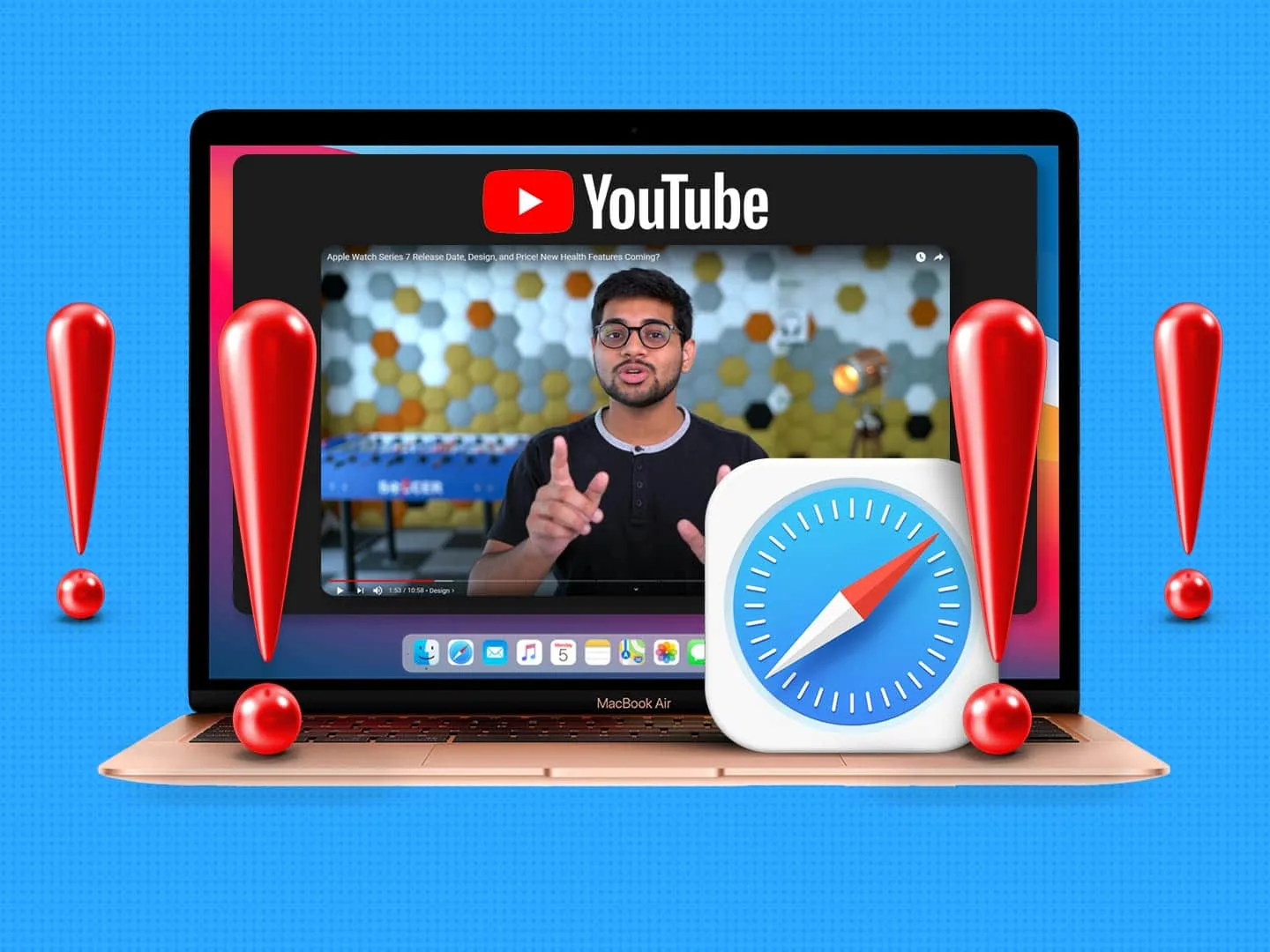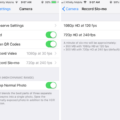One common issue that iPhone users may encounter is Safari not playing videos. This can be frustrating, especially when you’re trying to watch a video or stream content on your device. However, there are a few simple steps you can take to resolve this issue and get your videos playing again.
Firstly, it’s important to note that there could be multiple reasons why videos aren’t playing on Safari. It could be due to a problem with the Safari app itself, or it could be related to your device’s settings or internet connection. To troubleshoot this issue, follow the steps below:
1. Clear Safari history, cookies, and caches: Open your iPhone Settings and scroll down to find Safari. Tap on it and then select “Clear History and Website Data.” This will remove any stored data and cookies that may be causing conflicts with video playback. Once done, try playing the video again.
2. Force quit Safari and reopen it: Sometimes, a simple restart of the Safari app can resolve the issue. To force quit Safari, double-click the home button (or swipe up from the bottom on iPhone X or newer models) to open the app switcher. Find Safari and swipe it up or off the screen to close it completely. Then, reopen Safari and try playing the video again.
3. Empty Safari caches on Mac: If you’re using Safari on a Mac, you can try emptying the caches to fix video playback issues. Go to Safari > Preferences, then navigate to the “Advanced” tab. Check the “Show Develop menu in menu bar” box. Next, select the “Develop” menu from the menu bar and choose “Empty Caches” (shortcut Option + ⌘ + E). Restart Safari and check if the video plays.
4. Check for a compatible web video: Ensure that the video you’re trying to play is compatible with Safari. Look for the AirPlay icon in the video controls at the bottom of the video window. If the video is not compatible, you may need to try accessing it from a different browser or using a different video player.
5. Force restart your iPhone: Another solution to try is a force restart of your iPhone. This can help resolve any temporary software glitches that may be affecting video playback. To force restart your iPhone, press and quickly release the volume up button, followed by the volume down button. Then, press and hold the side button until the Apple logo appears. Once your iPhone restarts, try playing the video again.
By following these steps, you should be able to resolve the issue of videos not playing on Safari. However, if the problem persists, you may want to consider updating your device’s software, checking your internet connection, or seeking further assistance from Apple support.

Why Are Videos Not Playing in Safari?
There can be several reasons why videos may not be playing in Safari. Here are some possible causes:
1. Outdated Safari version: If you’re using an older version of Safari, it might not support the latest video codecs or technologies required to play certain videos. Make sure your Safari browser is up to date.
2. Incompatible video format: Some videos may be encoded in formats that are not supported by Safari. Safari supports popular video formats such as MP4, MOV, and M4V. If the video is in a different format, it may not play.
3. Plugin or extension conflicts: Safari plugins or extensions, such as ad blockers or video downloaders, can sometimes interfere with video playback. Try disabling any installed plugins or extensions and see if the videos start playing.
4. Slow internet connection: If your internet connection is slow or unstable, videos may not load or play properly. Check your internet speed and try restarting your router or connecting to a different network.
5. Missing or outdated plugins: Safari relies on plugins such as Adobe Flash or Microsoft Silverlight to play certain types of videos. Make sure you have the latest versions of these plugins installed, or consider enabling the built-in HTML5 video player in Safari preferences.
6. Cache and cookies issues: Accumulated cache and cookies data in Safari can sometimes cause playback issues. Clearing your Safari history, cookies, and caches can help resolve this problem. Go to iPhone Settings, select Safari, and tap on “Clear History and Website Data.”
7. Device restrictions: If you’re using a managed device, such as one provided by your employer or school, there may be restrictions in place that prevent video playback. Check with your administrator or IT department to ensure there are no restrictions limiting video playback.
Remember, these are just some possible reasons why videos may not be playing in Safari. If the issue persists, you may want to seek further assistance from Apple support or consult with a technical expert.
Why is Your Safari Not Playing Videos On Mac?
There could be several reasons why Safari is not playing videos on your Mac. Here are some possible causes and solutions:
1. Outdated Safari version: Ensure that you are using the latest version of Safari. Go to the App Store and check for any available updates for Safari. Install the updates if there are any.
2. Outdated plugins: Safari relies on various plugins to play certain types of videos. Make sure that you have the latest versions of these plugins installed. Common plugins include Adobe Flash Player, Microsoft Silverlight, and QuickTime Player. Visit the official websites of these plugins to download and install the latest versions.
3. Cache issues: Clearing the cache can help resolve playback issues. Open Safari and go to the menu bar. Click on Safari > Preferences. In the Preferences window, navigate to the Advanced tab. Check the box that says “Show Develop menu in menu bar.” Close the Preferences window. Now, click on Develop in the menu bar and select Empty Caches. Restart Safari and try playing the videos again.
4. Disabled AutoPlay: Safari has a feature called AutoPlay that allows videos to play automatically. Make sure this feature is enabled. In Safari, click on Safari in the menu bar and select Preferences. Go to the Websites tab and click on AutoPlay in the left sidebar. Make sure the option “Allow All Auto-Play” is selected or set to your preference for the websites you are trying to play videos on.
5. Security settings: Safari’s security settings may be blocking certain websites from playing videos. In Safari, go to Safari > Preferences and select the Security tab. Make sure the option “Allow Plug-ins” is enabled. Also, check the “Internet plug-ins” section and ensure that the plugins required for video playback are not disabled.
6. Third-party software conflicts: Some third-party software installed on your Mac could be causing conflicts with Safari’s video playback. Try disabling any browser extensions or plugins that you have installed. You can do this by going to Safari > Preferences > Extensions and unchecking the boxes next to the extensions you want to disable. Restart Safari and see if the videos play.
If none of these solutions work, it might be worth considering using an alternative browser like Google Chrome or Mozilla Firefox to see if the issue persists. Additionally, if the problem continues, it could be a hardware or software issue with your Mac, and it may be best to seek further technical support.
How Do You Get Safari to Play Videos?
To get Safari to play videos, follow these steps:
1. Launch the Safari app on your Mac.
2. In the address bar, enter the URL of the website that contains the video you want to play.
3. Once the website loads, locate the video on the page. Compatible videos will have an AirPlay icon in the video controls, which is usually found in the bottom part of the video window.
4. Click on the AirPlay icon. This will open a dropdown menu that displays the available AirPlay devices on your network.
5. Select the AirPlay device you want to play the video on. This could be your Apple TV or any other compatible device that supports AirPlay.
6. After selecting the AirPlay device, the video should start playing on the chosen device. The video will now be mirrored from your Mac to the selected device, allowing you to watch it on a larger screen if desired.
7. Control the playback of the video using the controls on the AirPlay device or through the Safari window on your Mac.
Note: It’s important to ensure that both your Mac and the AirPlay device are connected to the same Wi-Fi network for AirPlay to work properly. Additionally, not all web videos have AirPlay support, so you may not see the AirPlay icon on every video you come across.
How Do You Fix Safari Black Screen When Watching Videos?
To fix the Safari black screen issue when watching videos, you can follow the steps below:
1. Clear Safari cache and website data:
– Open the Settings app on your iPhone.
– Scroll down and tap on Safari.
– Scroll down again and select “Clear History and Website Data.”
– Confirm the action by tapping on “Clear History and Data.”
2. Update your iPhone software:
– Open the Settings app on your iPhone.
– Scroll down and tap on General.
– Select “Software Update” and check if any updates are available.
– If an update is available, tap on “Download and Install” to update your iPhone.
3. Disable Content Blockers:
– Open the Settings app on your iPhone.
– Scroll down and tap on Safari.
– Scroll down to the “General” section and toggle off any content blockers that are enabled.
4. Disable Low Power Mode:
– Open the Settings app on your iPhone.
– Scroll down and tap on Battery.
– If Low Power Mode is enabled, toggle it off.
5. Restart your iPhone:
– Press and hold the side button (or power button) along with either volume button until the power off slider appears.
– Drag the slider to turn off your iPhone.
– After a few seconds, press and hold the side button again until the Apple logo appears to restart your iPhone.
6. Reset All Settings:
– Open the Settings app on your iPhone.
– Scroll down and tap on General.
– Scroll down again and select “Reset.”
– Choose “Reset All Settings” and confirm the action by entering your passcode.
7. Update Safari:
– Open the App Store on your iPhone.
– Tap on your profile picture in the top right corner.
– Scroll down and look for Safari.
– If an update is available, tap on “Update” next to Safari.
If none of the above steps resolve the Safari black screen issue, you may need to contact Apple Support or consider seeking professional assistance to further diagnose and fix the problem.
Conclusion
When videos are not playing on Safari, there are a few steps you can take to troubleshoot the issue. First, try clearing the Safari history, cookies, and caches by going to iPhone Settings, selecting Safari, and tapping on Clear History and Website Data. Additionally, force quitting Safari and opening it again may help resolve the problem. To do this, go to Safari > Settings, navigate to Advanced, and check the “Show Develop menu in menu bar” box. Then, select the Develop menu and choose Empty Caches (shortcut Option + ⌘ + E). Restarting Safari afterwards can also be beneficial.
If the issue persists, you can try force restarting your iPhone. This involves pressing and quickly releasing the volume up button, followed by the volume down button. Then, press and hold the side button until the Apple logo appears. This may help resolve any software glitches causing the video playback problem.
Troubleshooting Safari video playback issues involves clearing history and caches, force quitting Safari, and restarting the device. These steps should help resolve most common issues and allow you to enjoy smooth video playback on Safari.







